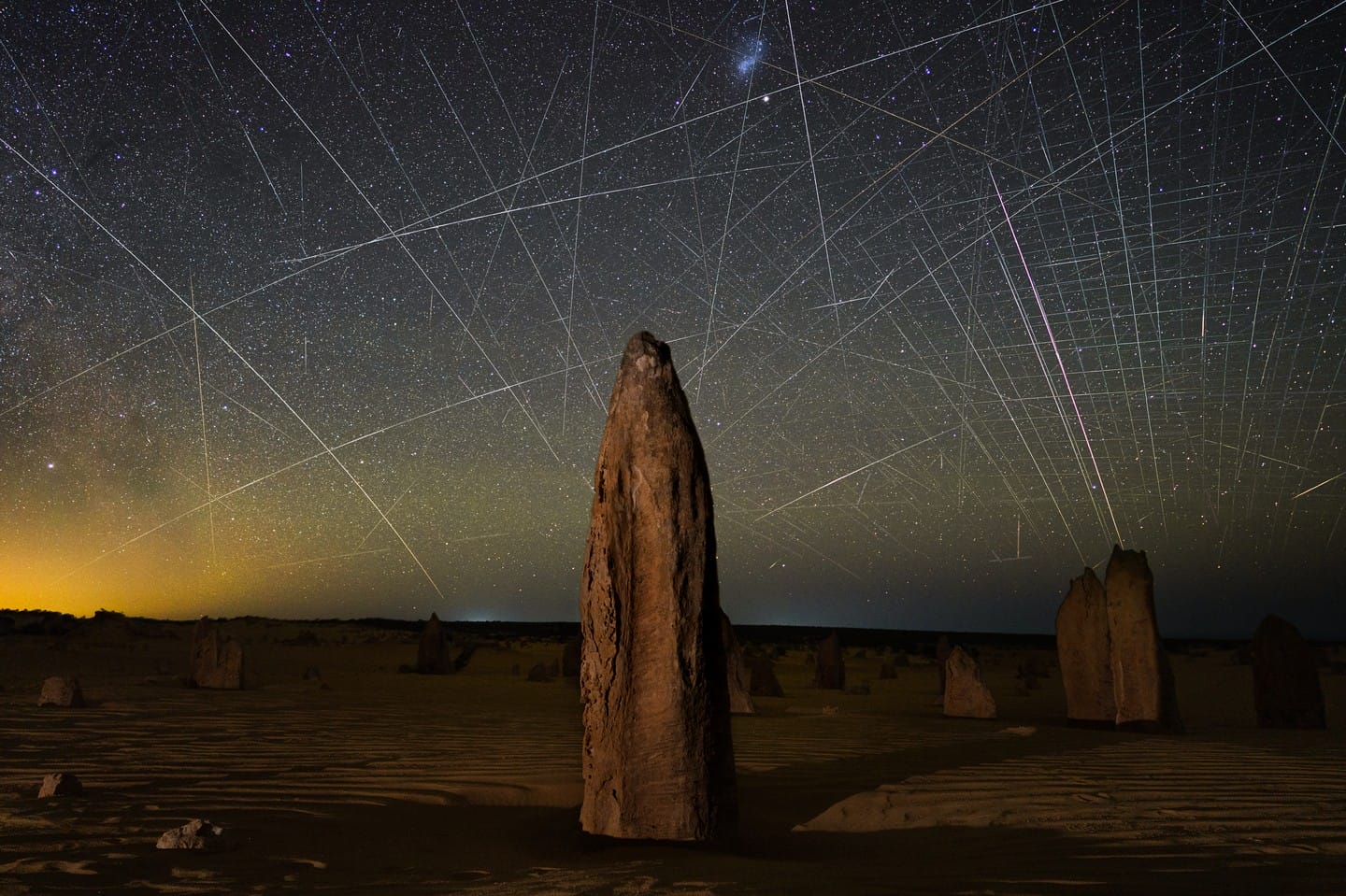This post was originally published on Colossal
In January 2021, Joshua Rozells ventured out into the Pinnacles Desert in Western Australia, intending to photograph a star trail. But after shooting for more than three hours and reviewing his images, he realized that the light patterns he captured weren’t what he had hoped for.
“There were satellite trails visible in almost every single photo,” he wrote on Instagram. “Instead of trying to get rid of them for a star trail, I decided to put the satellite trails together into a single image to show how polluted the night sky is becoming.”
Stitching together 343 distinct photos, Rozells illuminates a growing problem. When Elon Musk’s SpaceX launched Starlink in 2019, 60 satellites filled the skies, with a race from other companies to follow. That number has now topped 10,000, with tens of thousands more in the works. SpaceX alone plans to launch 40,000 more.
Rozells’ composite visually echoes pleas from astronomers, who warn that although satellites collect essential data, the staggering amount filling our skies will only worsen light pollution and our ability to study what lies beyond. Because this industry has little regulation, the problem could go unchecked.
“Thankfully, astronomers across the globe have taken notice of this growing issue and are starting to speak up,” Rozells adds. “Organisations such as the International Astronomical Union’s Center for the Protection of the Dark and Quiet Sky are advocating for the regulation and protection of the night sky.” (via Kottke)
Do stories and artists like this matter to you? Become a Colossal Member today and support independent arts publishing for as little as $7 per month. The article A Stunning Image of the Australian Desert Illuminates the Growing Problem of Satellite Pollution appeared first on Colossal.





0 Comments